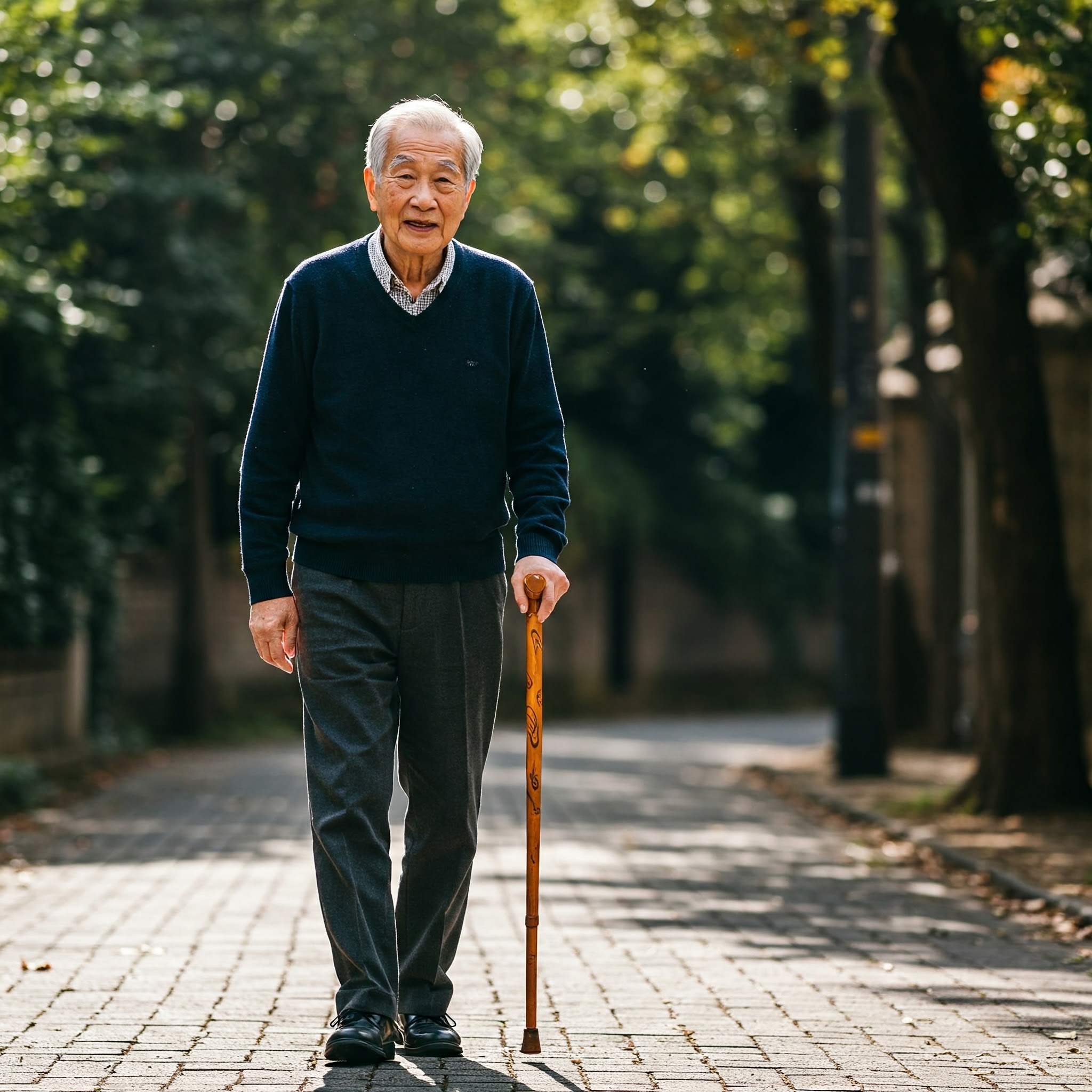How Aging Affects Joints: Problems and Care Tips for the Elderly
- Info
- Apr 16, 2025
- 9 views

As we journey through life, our bodies undergo numerous changes, and our joints are no exception. For the elderly, the natural wear and tear of aging can lead to various joint problems, impacting their mobility, independence, and overall quality of life. Understanding these changes and implementing appropriate care strategies is crucial for maintaining healthy and functional joints in later years.
Image Suggestion: A kind-looking elderly person gently stretching their leg while seated, perhaps with a supportive hand on their knee. The image should convey a sense of gentle activity and self-care.
The Natural Changes in Aging Joints:
Over time, the intricate structures within our joints experience natural deterioration:
- Osteoarthritis (OA): This is the most common type of arthritis, particularly prevalent in older adults. It occurs when the protective cartilage that cushions the ends of bones within a joint gradually breaks down. This leads to bone-on-bone friction, causing pain, stiffness, swelling, and reduced range of motion. Weight-bearing joints like knees, hips, and spine are most commonly affected.
- Decreased Cartilage Thickness: Cartilage acts as a shock absorber in our joints. With age, this cartilage can thin out and become less resilient, making joints more vulnerable to stress and injury.
- Reduced Synovial Fluid: Synovial fluid lubricates the joints, allowing for smooth movement. As we age, the production of this fluid can decrease, leading to stiffness and a feeling of "grinding" in the joints.
- Weakened Ligaments and Tendons: Ligaments connect bones to each other, while tendons connect muscles to bones. With age, these connective tissues can lose some of their elasticity and strength, making joints less stable and increasing the risk of sprains and strains.
- Changes in Bone Density: While not directly a joint issue, age-related bone loss (osteoporosis) can affect the bones around the joints, making them more susceptible to fractures, which can indirectly impact joint health and function.
Common Joint Problems in the Elderly:
These age-related changes often manifest as various joint problems, including:
- Persistent Joint Pain: This is a hallmark symptom of osteoarthritis and other joint conditions, often worsening with activity and improving with rest.
- Stiffness: Joints may feel stiff, especially in the morning or after periods of inactivity.
- Swelling and Tenderness: Inflammation in the joints can cause swelling, warmth, and tenderness to the touch.
- Decreased Range of Motion: Difficulty bending, straightening, or moving joints through their full range can significantly limit daily activities.
- Creaking or Grinding Sensations: These noises, known as crepitus, can occur when the roughened surfaces of cartilage rub together.
- Increased Risk of Falls: Joint pain and stiffness can affect balance and coordination, increasing the likelihood of falls, which can lead to further joint injuries or fractures.
Care Tips for Healthy Joints in the Elderly:
While some age-related joint changes are inevitable, there are many proactive steps elderly individuals can take to manage joint health and maintain an active lifestyle:
- Engage in Regular, Low-Impact Exercise: Activities like walking, swimming, cycling, and water aerobics are gentle on the joints while helping to strengthen surrounding muscles, improve flexibility, and maintain a healthy weight. Consult a doctor or physical therapist for personalized exercise recommendations.
- Maintain a Healthy Weight: Excess weight puts significant stress on weight-bearing joints. Losing even a small amount of weight can significantly reduce pain and improve joint function.
- Follow a Balanced and Nutritious Diet: A diet rich in fruits, vegetables, whole grains, and lean protein provides essential nutrients for joint health. Ensure adequate intake of calcium and vitamin D for bone health. Some studies suggest that omega-3 fatty acids found in fish oil may have anti-inflammatory benefits.
- Use Assistive Devices When Needed: Canes, walkers, and other mobility aids can help to reduce stress on painful joints and improve stability, reducing the risk of falls.
- Manage Pain Effectively: Over-the-counter pain relievers like acetaminophen or ibuprofen can help manage mild to moderate joint pain. Prescription medications, including NSAIDs and other pain relievers, may be necessary for more severe pain. Always consult a doctor before taking any new medications.
- Explore Non-Pharmacological Pain Management: Heat and cold therapy, such as applying warm compresses or ice packs to affected joints, can provide temporary pain relief. Gentle massage can also help to improve circulation and reduce stiffness.
- Consider Physical and Occupational Therapy: These therapies can teach exercises and strategies to improve strength, flexibility, balance, and daily living skills, making it easier to manage joint pain and limitations.
- Stay Hydrated: Drinking enough water is important for overall health and can help keep joints lubricated.
- Get Enough Rest: Adequate sleep allows the body to repair and recover, which is important for managing joint inflammation and pain.
- Regular Check-ups with Your Doctor: Regular medical check-ups can help monitor joint health, identify potential problems early, and ensure appropriate management strategies are in place.
Conclusion:
While aging inevitably brings changes to our joints, it doesn't have to mean a life of pain and limited mobility. By understanding how aging affects these vital structures and adopting proactive care strategies, elderly individuals can significantly improve their joint health, maintain their independence, and continue to enjoy an active and fulfilling life. Prioritizing joint health is an investment in overall well-being in the golden years.
Related Post
Get informed about the Nipah Virus. Learn about its symptoms, how it spreads, and effective prevention tips to protect yourself and others.
practical strategies for women's health, work-life balance, and time management on International Women's Day 2025. Prioritize your well-being today!
Discover a comprehensive guide to urinary incontinence, covering types, symptoms, causes, diagnosis, and treatment options
What is swine flu (H1N1)? Identify symptoms early, understand causes, and know prevention methods.
Why Are My Feet Always Cold? Explore the causes, underlying health conditions, and easy home remedies to improve circulation
Learn about the VDRL test, its purpose, procedure, and how it helps detect syphilis.
